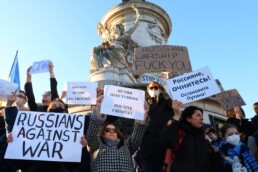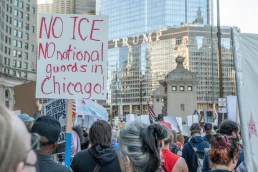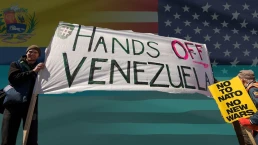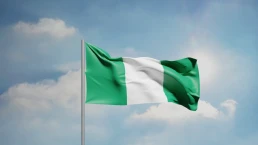Networks of resistance are weak in Russia, after years of state suppression. But new ones are being built by Russian anti-war activists.
By Alexander Bidin, Open Democracy
In the early morning of 24 February 2022, Russia launched a military invasion of Ukraine. That same day, unsanctioned street protests were held in many Russian cities. Due to the actions of the Russian police, which dispersed any gatherings, it is difficult to calculate exactly how many people took part in the anti-war protests. But the number of people detained is known: human rights organisation OVD-Info counted almost 2,000 people.
For comparison, when opposition leader Alexey Navalny was arrested in January 2021 – the largest unsanctioned protests in the history of independent Russia – OVD-Info reported that 3,893 people were detained. These figures show that many people in Russia came out against the war, but the number was still lower than a year ago. Most importantly, protest attendance did not correspond to the degree of indignation against Russia’s invasion expressed online.

Celebrities speak out
Even celebrities who are well integrated into Russian pop culture have published anti-war appeals online. Ever since the Kremlin took control of Russia’s airwaves in the early 2000s, TV presenters and artists have either shied away from political statements or, on the contrary, have demonstrated loyalty to the authorities, which has often been generously repaid. Their public condemnation of the war is indicative – it may be followed by ‘excommunication’ and the collapse of their careers.
Valery Meladze, for example, a well-known singer and producer who is also a long-time member of the ruling United Russia party, posted a video message on his Instagram on Thursday. In it, he condemned Russia’s military operations and called for a diplomatic solution. Prominent comedian and showman Maxim Galkin, who is also a state media presenter, posted “There are no justifications for war” on Instagram, together with a black square. Another state media host, comedian Ivan Urgant, posted the following message on social media: “Fear and Pain. NO WAR.” Urgant’s evening programme was supposed to be shown on 25 February. It was taken off the air.
There’s little point in running through other statements by other leaders of Russian public opinion who are less prominent and less dependent on the authorities. It would take up too much space. The question is: why haven’t more people taken to the streets? The Russian opposition has, after all, been organising actions called ‘The March of Millions’ with the specific goal of mass protests for the past decade.
There are several reasons why.
Opposition crackdown
First of all, Russian society lacks institutions that are capable of taking up the organisation of protests, especially at short notice. For example, the 2021 protests over Navalny’s arrest were organised through Navalny’s network of local coordinating teams around the country – perhaps the only real political machine left in Russia. Since the end of the last decade, the Navalny network has been the centre of all protest activity in Russia. The organisation included 45 regional branches, with 180 full-time employees and an unspecified number of volunteers.
Thanks to these resources and planning, the network managed to establish contact with a wide section of Russian society. After the Navalny network was declared an extremist organisation in June 2021, the legal structure was liquidated and many of its employees were forced to emigrate abroad. The social media accounts of the network (including Telegram channels and mailing lists) – which established contact with Russian audiences – were more or less frozen.
As a result, when Russia invaded Ukraine last week, there was no working mechanism capable of quickly coordinating people to take to the streets en masse. The remaining media resources of Navalny’s Anti-Corruption Foundation (for example, on Twitter) published only news about the war, interspersed with updates from a Russian courtroom where yet another trial of Navalny was entering its fourth day.
The role of protest coordinator was instead taken by Marina Litvinovich, a former political strategist and media manager who is now a human rights activist with political ambitions. Around noon on 24 February, Litvinovich posted an appeal for people to gather at 7pm in city centres across Russia.
Due to her public status and circle of acquaintances, several independent media outlets disseminated Litvinovich’s call to protest. But it wasn’t a large number. For example, the largest Russian online independent outlet, Meduza, did not report the planned protests. Litvinovich’s own social media accounts also fall short of Navalny’s audience. For example, about 7,500 people are subscribed to Litvinovich’s Instagram account. Navalny’s account has 3.5 million subscribers.
The most motivated Russian citizens therefore sought out information on the protest from the internet or friends. “I had planned to go with my friends to the anti-war rally on 5 March. Some public figures applied to hold a protest on this date,” one protester, Polina from Moscow, said. When she was arrested on 24 February, she said, the police officer broke her arm.
“On the day war was declared, I woke up, as usual, early, at six o’clock. And got stuck in the news. My boyfriend woke up at 9 o’clock. I told him what was happening. We cried together. I wrote to my friend Masha. It was obvious that there was no point in waiting for 5 March. She told me to meet at 6.30pm in the city centre.”
Medical student Nikita, who took part in anti-war protests in Yekaterinburg, says he was sure some people would protest over the war. “I was in the city centre, following the news. And when TE [Typical Yekaterinburg – a social media channel in the city] began to cover the events, I went there. There was no information in advance, unlike when the Navalny teams functioned. There was no coordination between people, there was no agitation either. These were people who came there themselves, after reports that two people had already been detained for picketing.”
Unintended effects
The news about the detentions of people protesting against the war thus became a source of information about the time and place of the protests. For example, Marina Litvinovich was detained at the entrance to her building at 3pm on 24 February, and most Russian media coverage, which contained information about the protests, focused on her arrest. The police accused Litvinovich of organising an unauthorised rally for spreading calls to protest and took her to a Moscow police station.
Other activists are facing similar charges, as well as publications that disseminate information about upcoming protests (a Russian media outlet can receive a fine of between 800,000 and four million roubles for not removing “calls for illegal public actions and riots”). This threat significantly hinders the dissemination of information and reduces potential protest attendance to highly motivated and relatively active internet users.
This last factor most likely explains who was there on the first day of the anti-war protests. In St Petersburg, the majority of the protesters were young people, though middle-aged and older people made up 20% of the crowd, according to people I spoke to. Participants from Moscow reported a similar breakdown.
Roman, who spent the entire evening in the centre of the Russian capital, said: “Most of the participants were young people. There were very few older people.” Polina echoed him. “Everyone is like me give or take, people under 30. It seemed that there were fewer people from the older generations. Maybe it’s because I went on the first day and older people didn’t have time to react.”
Despite the similarity in the composition of the rallies, there were differences between St Petersburg and Moscow. Contrary to expectations, in St Petersburg on the first day of the war, the police acted less harshly than when they suppressed protests in support of Navalny a year ago, when many protesters were beaten with stun guns. In the end, the police did not allow a large group of protesters to concentrate in one place, gradually clearing the area adjacent to the city’s Gostiny Dvor metro station. In Moscow, on the contrary, the arrests were more brutal than usual.
“I was surprised how tough it was this time. Before that, it was still possible to see police officers as people at protests. But not this time,” said Polina. According to her, people who were detained in Moscow were not allowed to make telephone calls, including minors. “It seems to me that [the police] acted this way because they understood that they had no excuses. I think it was their psychological defence,” she said.
Nikita from Yekaterinburg talks about a similar situation. “I heard that 50 people were detained in our city. Compared to St Petersburg, the police here are usually less violent and detain only about 20 people even at more mass protests.” Yet in the capital of the Urals, police even arrested a driver who honked while passing protesters.
The noose tightens
These differences levelled off in the following days. In St Petersburg, police began to detain every potential protester they could. Realising the impossibility of gathering in one place, the protesters began to move in groups around the city centres, chanting slogans and evading the police. This added drama to the events, but prevented protesters from showing strength of numbers – an important element of political representation. The size of a protest is also important for capturing urban space.
That said, there is no need to talk about tactics yet. The lack of coordination not only affects protest numbers in Russia, but also the ability of the protesters to take rational action. For the majority, going out into the streets is a moral duty and a symbolic act, rather than a functional instrument of resistance to the authorities. For example, Nikita believes that the street protests in Yekaterinburg cannot influence federal policy. Polina from Moscow shares his pessimism. “I have no expectations, no purpose other than to wash off this shame a little. It is clear that nothing can be done,” she says.
Perhaps the best illustration of this pessimism is when a 22-year-old student threw a Molotov cocktail at police officers in Moscow. It was a weak throw: the bottle fell in the middle of the road without reaching the target, and then rolled along the road without breaking. It was a radical, but symbolic gesture of desperation that did not harm anyone. But given that people in Russia now receive real prison sentences for throwing a paper cup at a policeman, one can hardly hope that the court will consider this act harmless.
Where now?
The level of despair is thus rising. On the fourth day of the war, 27 February, Moscow’s central Tverskaya Street witnessed a burning car. An unknown person had painted it with the slogans “People, stand up! This is war! Putin is scum”, drove it into some barriers and then fled. Given the background fears about a possible nuclear war, there will most likely only be more such extreme actions in Russia.
However, it is extremely difficult to predict anything in the current situation. If Russia’s anti-war protest remains in its current form, then it is unlikely to be able to influence the political decisions of the Russian authorities.
It is more likely that protesters, with the help of the Russian opposition, will be able to establish channels of communication with the wider population, especially over the economic consequences of sanctions. (The first signs of sanctions hitting are already visible on the price tags in Russian shops.) But even massive demonstrations on the streets does not guarantee the success of anti-war demands. And not only in Russia: 36 million protesters around the world could not stop the 2003 invasion of Iraq. In addition, there is the possibility that mass demonstrations can simply be suppressed.
“I think the dead Russians and Ukrainians will not let you become indifferent and return to normal life quickly,” said Polina. “But the experience of Belarus shows that systemic violence stifles any protest.”
It’s hard to disagree with her. But also do not forget that in addition to the depressing ‘Belarusian scenario’, where mass protests were brutally suppressed in 2020, there is a more optimistic scenario from the wider region: Armenia’s 2018 revolution. Armenian protesters, with the help of a general strike, were able to bring the capital to a halt and win the army over to their side, which forced the police to retreat. Given the distinct unpopularity of the war in a significant section of Russian society and its serious military losses, this scenario may not be a total fantasy.
Recent Posts
Anti-ICE Resistance Sprang Up Across Red States In 2025
December 29, 2025
Take Action Now In Texas, North Carolina, Alabama, Tennessee, Florida, and beyond, grassroots resistance to ICE is growing.By Sonali Kolhatkar,…
Trump Suggests US Bombed ‘Big Facility’ in Venezuela. No One Seems to Know What He’s Talking About
December 29, 2025
Take Action Now Administration officials have yet to provide any details about the supposed strike, which would mark a massive escalation in the…
Nigerian Village Bombed by Trump Has ‘No Known History’ of Anti-Christian Terrorism, Locals Say
December 28, 2025
Take Action Now “Portraying Nigeria’s security challenges as a targeted campaign against a single religious group is a gross misrepresentation of…
How Effective Are Protests? Historians Say: Very.
December 27, 2025
Take Action Now Protests change the protesters, their communities and the nation. From emancipation to women’s suffrage, civil rights and BLM, mass…




